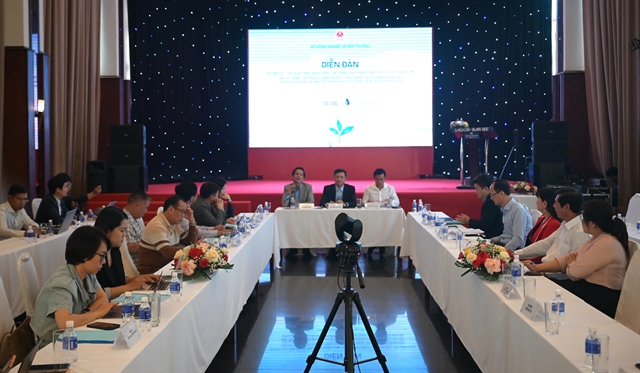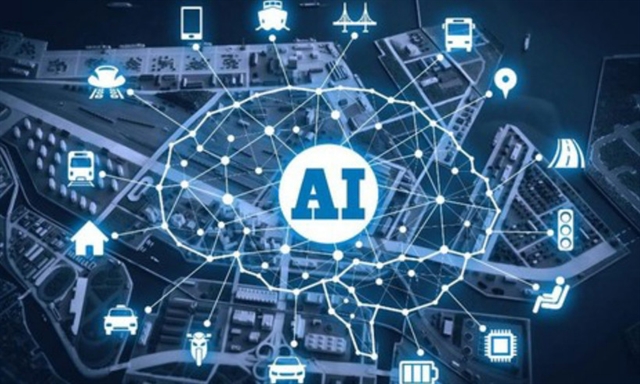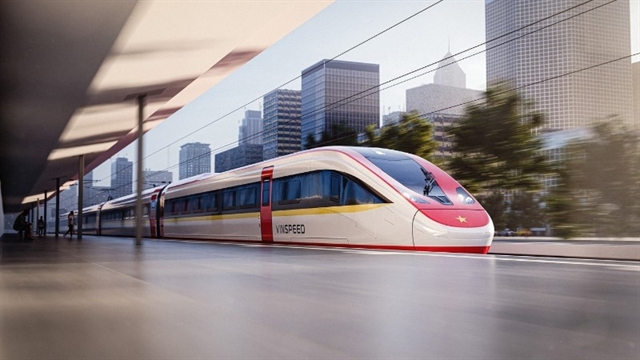 Environment
Environment

 |
| A section of Sài Gòn River in District 1. — VNA/VNS Photo |
HCM CITY — Water quality in the Sài Gòn-Đồng Nai River, the main supplier for water factories in HCM City, has declined due to urbanisation.
According to Sài Gòn Water Corporation (Sawaco), HCM City is located at the end of the Sài Gòn-Đồng Nai river basin. The socio-economic development has had negative impacts on river water quality.
Up to 94 per cent of water supply for HCM City’s factories come from this 2,000km stretch of river.
The river receives a huge volume of wastewater from residential areas, manufacturing plants, industrial parks and export processing zones located along the river. Wastewater along with rainwater runs through the sewer system, causing serious pollution.
The river is also impacted by salinity in the dry season.
According to the water monitoring report conducted by the city Department of Natural Resources and Environment in the first six months of this year, surface water quality of canals with dredging and urban renovation works such as Nhiêu Lộc-Thị Nghè Canal, Tàu Hủ-Bến Nghé Canal is relatively good. But the inter-provincial canals such as Thầy Cai-Cần Giuộc Canal, Nước Lên Canal-Chợ Đệm River are still heavily polluted.
It is reported by Vietnam News Agency that the water at Văn Thánh Canal in Bình Thạnh District is always dark due to rubbish and sewage from surrounding households.
The 19-5 Canal connecting three districts of Tân Bình-Tân Phú-Bình Tân has been polluted for years because it receives sewage from local households and factories.
The same situation is reported in the Phạm Văn Bạch Canal in Tân Bình District. Pollution is mainly caused by car washing services, metal production, laundry and food services along the canal.
In spite of solutions taken by local authorities such as relocating households and factories along canals, collecting garbage and dreading mud, the pollution seems not to improve much, Vietnam News Agency reported.
HCM City now has three wastewater treatment factories. With the capacity of more than 130,000cu.m per day of each factory, only 13 per cent of wastewater released every day in the whole city is treated.
Nguyễn Thị Thanh Mỹ, deputy director of the city Department of Natural Resources and Environment, said the city is promoting the transfer of wastewater to concentrated water treatment zones. It aims to treat all industrial, service and domestic wastewater following standards.
The city’s authorities will step up supervision on activities of throwing garbage into canals and releasing untreated wastewater into environment, she said.
Local residents can send their reports or feedback on polluted spots to the city’s authorities for better management, she said.
According to the city’s Department of Construction, by 2025, about 80 per cent of wastewater in HCM City or nearly 2.6 million cu.m per day will be collected and treated following standards before being discharged into environment.
To realise this target, the city will call for investment of 12 urban wastewater treatment factories and finish the Nhiêu Lộc-Thị Nghè area’s cleanup project (second phase) by 2024.
Water factories in the city will receive water from other supplies such as Dầu Tiếng and Trị An lakes.
Trần Kim Thạch, head of Sawaco quality management department, said the most important factor is public awareness. Local people must make commitment to not throwing garbage and encouraging each other to clean up environment.
“All authorities’ efforts are meaningless if locals continue to throw garbage and release wastewater into rivers and canals,” he said. — VNS




